federalaviationadministration
Latest
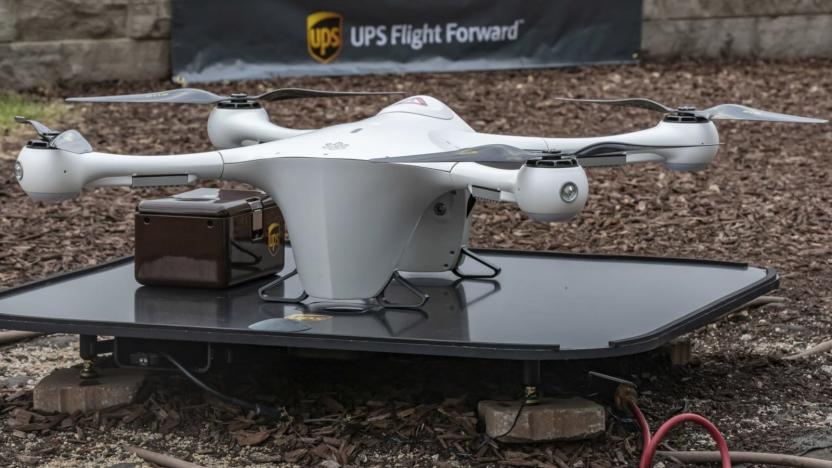
UPS delivery drones are on the way after FAA certification
UPS might soon be dropping off packages across the US by drone. The Federal Aviation Administration granted the UPS Flight Forward subsidiary air carrier and operator certification, allowing it to use drones for commercial deliveries.
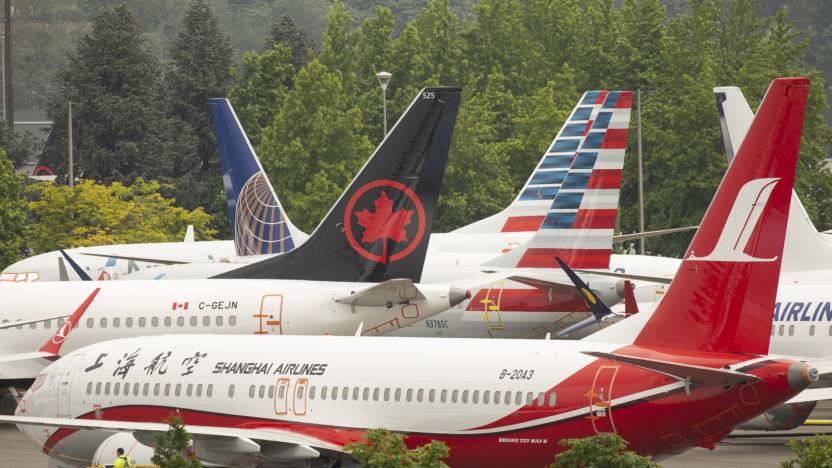
FAA discovers another potential risk with the Boeing 737 Max
The Federal Aviation Administration has discovered another potential risk with the grounded 737 Max that Boeing has to resolve. The issue emerged during a simulator test last week, according to Reuters. As such, a certification test flight isn't expected to take place until July 8th at the earliest, further delaying the plane's return to service.

Proposed FAA rules loosen restrictions on drone flights at night
Right on the heels of Canada introducing new, stricter regulations for drone operations, the US Department of Transportation proposed a new set of rules for drones that would allow the unmanned vehicles to fly over populated areas and operate at night. The proposal also includes a pilot program for drone traffic management that would help to integrate the aircraft into the nation's airspace.
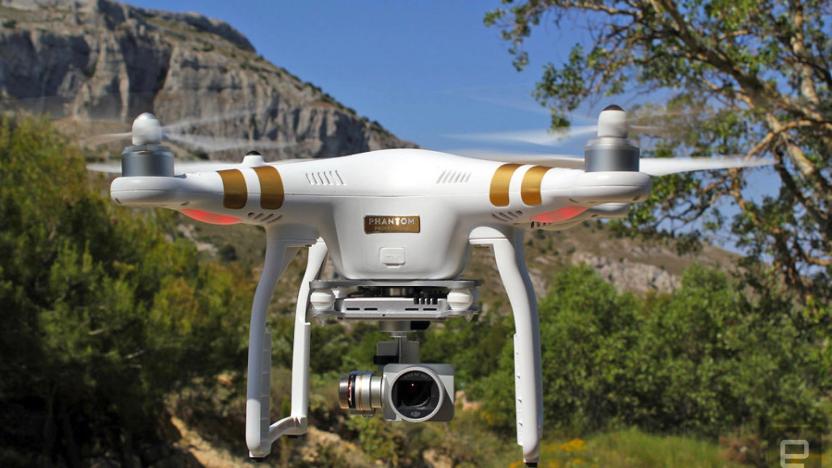
Airspace rights still unclear after drone lawsuit dismissed
Where exactly you're entitled to fly your drone in the US without fear of it being blasted out of the sky continues to be a legal gray area, after a judge dismissed another case brought against self-proclaimed "drone slayer" William Merideth. The Kentucky resident was originally charged in 2015 for firing a gun within city limits, shooting down David Boggs' Phantom 3 quadcopter in the process. The charge was dropped after a judge ruled the drone invaded Merideth's privacy since it was over his land, but Boggs subsequently sued Merideth in federal court seeking damages of $1,500 to cover the cost of the Phantom 3. This case was recently dismissed on something of a technicality, though, leaving a key legal question around airspace rights unanswered.

Amazon proposes a delivery drone flight plan
Following the FAA's recent relaxation of commercial drone flight regulations, Amazon is forging ahead with plans to employ the machines for deliveries. But first, the company has proposed some ground rules to keep the fledgling industry flying safely and out of the way of manned aircraft. Currently the FAA only allows drones to climb to 400 feet and they must remain within the pilot's line of sight. They also cannot be operated within five miles of an airport. Amazon's proposal builds off these initial restrictions with faster, long-range drones flying between 200 and 400 feet up. Slower and short-range drones would operate below 200 feet.
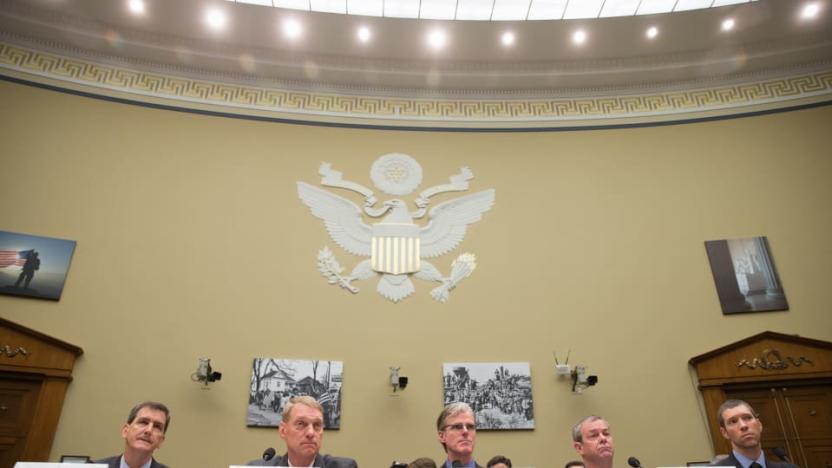
Amazon's delivery drones could be in the air within a year
Commercial drone operations like Amazon's highly-touted delivery service could commence in about a year, according to a senior official from the Federal Aviation Administration. FAA Deputy Administrator Michael Whitaker told a congressional committee on Wednesday the necessary regulations for commercial UAVs to operate in public airspace will "be in place within a year." That's way shorter than the 2017 start date that the FAA originally figured on. And when the rules are finally settled on, Amazon will be ready. "We'd like to begin delivering to our customers as soon as it's approved," Paul Misener, Amazon's VP of global public policy, testified at the hearing. "We will have it (the technology) in place by the time any regulations are ready. We are working very quickly."

New FAA system can track twice as many flights at once
Whoever said "it's the journey, not the destination" obviously lived in a time before air travel. But maybe, just maybe, the Department of Transportation's implementation of the En Route Automation Modernization (ERAM), the "backbone" of the NextGen air-traffic system, could change how we feel about getting on a flight. There are a few things making up ERAM: performance based navigation, automatic dependent surveillance-broadcast (ADS-B) and data comm.

To keep a Boeing Dreamliner flying, reboot once every 248 days
The 787 Dreamliner has been plagued with battery woes since its early days, to the point where the Federal Aviation Administration kept it from flying the skies in the past. And while those technical difficulties are apparently taken care of, Boeing's flagship airliner could be on the way to more trouble soon. According to the FAA, there's a software bug in the 787 Dreamliner that can cause its electrical system to fail and, as a result, lead to "loss of control" of the plane. But why? The FAA says this is triggered by the aircraft's electrical generators, which could give out if they have been powered on continuously for over eight months.
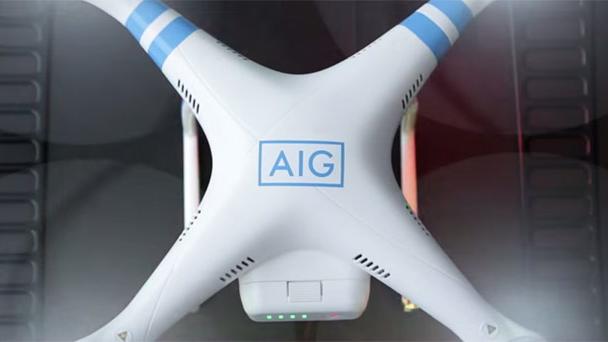
FAA allows AIG to use drones for insurance inspections
The Federal Aviation Administration has been rather stingy when it comes to giving companies the OK to test, let alone employ, drones. After getting permission this week, AIG joins State Farm and USAA as insurance providers with exemptions that allow them to use the UAVs to perform tasks that are risky to regular folks -- things like roof inspections after a major storm. In addition to keeping its inspectors safe, the company says drones will speed up the claims process, which means its customers will, in theory, get paid faster. "UAVs can help accelerate surveys of disaster areas with high resolution images for faster claims handling, risk assessment, and payments," the news release explains. "They can also quickly and safely reach areas that could be dangerous or inaccessible for manual inspection, and they provide richer information about properties, structures, and claim events."
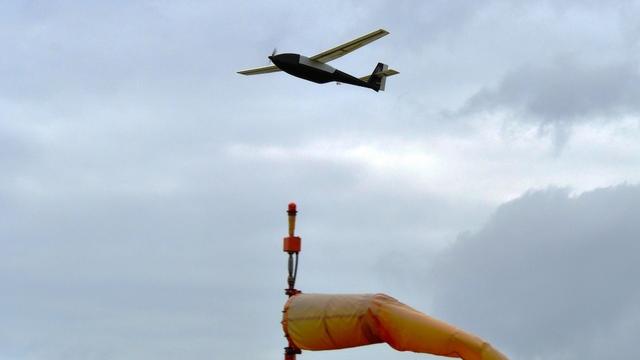
FAA's next traffic control system may not be fit for drones
Much has changed since the Federal Aviation Administration decided to start testing drones in the US for the first time. Part of that is due to the growing interest in UAVs over recent months, not only from hobbyists, but also from major technology companies including Amazon, Facebook and Google. There's certainly potential for a great deal of congestion in the skies in the near future, but the FAA doesn't believe its upcoming NextGen control system is ready to handle all the forecasted traffic from commercial drones -- not yet, at least. "We didn't understand the magnitude to which (drones) would be an oncoming tidal wave, something that must be dealt with, and quickly," FAA Assistant Administrator Ed Bolton told the Associated Press.

Australia will let flight passengers use electronics gate to gate
A number of countries are starting to change those outdated rules on the use of personal electronics on flights, with some places taking slightly longer than others. The latest to follow suit, in a gadget-friendly list mostly comprising of US-based airlines, is Australia. Earlier today, the Australian Civil Aviation Safety Authority finally approved the request from Qantas and Virgin Australia to allow passengers to keep their devices on at all times while traveling, from liftoff to touchdown -- so long as they are kept on Airplane Mode. As expected, this only applies to handheld electronics, such as smartphones, tablets and e-readers; anything that weighs more than 1kg (2.2 lbs) will need to remain stowed during takeoff and landing. It is effective as of tomorrow, so now you won't have to throw a fit the next time your Virgin Australia steward tells you to turn that phone or slate off.

FAA committee thinks smartphone and tablet use should be allowed during takeoff and landing
Recall that silent rage you get when you're told to switch of your Kindle, iPod or laptop for take-off and landing, even when there's nothing wireless going on. Well, the FAA could be approaching a change in the rules. A 28-member committee, created by the Federal Aviation Administration itself, has offered up its recommendation that flyers should be able to use "most" devices during takeoff and landing. Data-based activities and voice calls would still be prohibited, but the group recommends that passengers should be allowed to watch videos, type away at documents, listen to music and more when planes take off and land. Amazon has already released a statement, with the company acting as the representative device manufacturer within the FAA committee. "We've been fighting for our customers on this issue for years - testing an airplane packed full of Kindles, working with the FAA, and serving as the device manufacturer on this committee," said Amazon's Drew Herdener. "This is a big win for customers and, frankly, it's about time". If the FAA decides to progress with these recommendations (although it certainly doesn't have to), changes could occur as soon as early 2014. However, timing will depend on how the FAA decides to roll out implementation. However, according to industry officials, if it's done airline by airline, it could well take longer. We'll continue to pack a paperback for now.

US Federal Aviation Administration to re-examine in-flight electronics use
Chances are good that you'll still need to put your electronic devices away during takeoff and landing, but the U.S. Federal Aviation Administration (FAA) is forming a combined government-industry group to determine when your computer, smartphone and tablet can be safely used. The major reason you're asked to power down those devices during portions of the flight is to prevent interference with communications and navigation devices during the most crucial phases. The group the FAA is forming will include participants from pilot, flight attendant, and passenger groups, as well as airlines, mobile companies, and aviation manufacturers. The group will be formed this fall, meet for a six-month period, and then report back to the FAA on the testing methods used by airlines to determine safety and possible standards for use of devices in flight. They will not be looking at allowing voice calls on cellphones during flights. You, the flying public, have a chance to put in your word with the FAA starting today. A Request for Comments (RFC) should be published in the Federal Register today, kicking off a 60-day period during which the public is requested to make comments on various issues. The cellular industry's industry group, CTIA, has one opinion -- "The use of portable electronic devices while on a flight -- the whole flight -- should absolutely be allowed," said CTIA executive Jot Carpenter. Whether the flying public will tolerate loud cell phone calls during flights is another matter...

FAA to expand iPad usage, create app store
According to a report on aviation website AVweb, the Federal Aviation Administration plans to expand the use of the iPad by its employees. By 2014, employees will be given the choice to replace their laptops with an iPad and possibly other Android tablets. The FAA has found that the iPad improved efficiency and lowered costs, especially among employees like mechanics who consult technical repair manuals on the tablet and lawyers who use the iPad to access legal files online. The FAA also has plans to create an app store with apps that meet the needs of its employees. Hat tip to Marty for sending this in!

FAA to take 'fresh look' at gadget restrictions on flights
The only thing worse than the Terrible 10,000 Feet is the underlying sense that it's all so unnecessary. Why should using an iPad, Kindle or bag-holding alarm clock be banned during take-off and landing, even with all wireless comms switched off? Nick Bilton from the New York Times has been hounding the Federal Aviation Administration over this issue for a while, but he's suddenly received a reply other than "Just turn it off, sir." A senior official told him that the agency as decided to take a "fresh look" at the rules, not for cell phones, but for the myriad of other gadgets that can make a flight so much more peaceful and productive. Currently, airlines complain that they have to test each model of device individually, on every single plane in the fleet, and with a separate empty flight used for each test, before they're allowed to relax the rules for that model. That's why personal electronic devices remain so closely restricted, but also why there's so much room for a smarter solution -- even if there are still reams of red-tape to overcome before anything changes.

Congress passes bill giving the FAA $11 billion to get off radar, onto GPS
It took awhile, and the price tag is quite a bit steeper than previously thought (shocking, right?), but the FAA is finally getting the funding it needs to bring the nation's air traffic control system up to date. Congress just passed the bill to make it happen, allotting $11 billion to the FAA to upgrade the nation's 35 busiest airports air traffic controls from radar to GPS. The deadline for the conversion is June 2015, and when complete, it'll allow for more precise positioning of aircraft -- GPS pings for the planes' locations every second, while radar updates their locations every 6 to 12 seconds. With such technology enabled, airplanes will be able to take-off and land more closely together while utilizing steeper descents than is currently possible to conserve fuel. So, now that we've got the new traffic control system to improve airline punctuality, we just need the FAA and the FCC to team up and eliminate the "Terrible 10,000 feet" and flying might actually be fun.

Reports: American Airlines wins FAA approval for in-cockpit iPads, will launch Friday
If you fly as an American Airlines premium passenger, you'll get to play with a Galaxy Tab. If you actually fly the plane, though, you'll have to make do with an iPad. According to ZDNet, the carrier has already won FAA approval to use iPads "as electronic chart and digital flight manual readers," making it the world's first airline to be totally tablet friendly. A source close to the situation tells ZDNet that AA "will begin iPad operations on B-777 aircraft" before expanding to other planes, and that both first and second generation devices have been cleared for cockpit use. An AA pilot, meanwhile, tells TechCrunch that the company's tablets will feature JeppTC (a flight chart app available in the App Store), and that all onboard slates will be required to fly with an extra battery. The program, slated to kick off this Friday, could also offer substantial savings in paper and fuel costs. According to Seattle Pi's estimates, a single iPad would replace some 35 pounds of paper per year, translating to approximately $1.2 million in saved fuel costs. Insiders say United and Delta are pursuing similar initiatives, with the latter reportedly looking for an Android-specific solution, though at the moment, only American Airlines has won the FAA's seal of approval.

iPad gets approval from FAA to replace paper flight charts and maps
The Federal Aviation Administration is moving with the times, it would seem, as it has just granted the first approval for the use of iPads instead of paper charts for informing airline pilots while on duty. There are already a number of EFB (electronic flight bag) devices in use, however the iPad is by far the cheapest and most portable one that's been validated yet. Executive Jet Management, a charter flight operator, went through three months of testing with the iPad, wherein it was used by 55 pilots on 250 flights, in order to obtain its FAA license to rely exclusively on the Apple tablet for its in-flight mapping data. Other airlines will have to go through the same process in order to dump their big stacks of paper charts for a slinky slate, but the important thing is that the precedent has been set. As to redundancies in case of failure or a software crash, the likeliest scenario is that pilots will carry a spare iPad with them, though there wasn't even a single (software) crash during the trial period -- which also included rapid decompression and electronic interference testing. So there you have it, the iPad's found itself a grown-up job just in time to retire from its throne as consumer sales leader. [Thanks, Andrew]

GPS-based air traffic control system to go live by 2020
If you've ever watched an investigative journalism show that exposes things you didn't know you had to worry about, there's a good chance you've seen footage of the archaic green-screens in use at airport towers across the country paired with shocking headlines like "Hidden Airport Menace" or "Glidepath to Danger." Plans to replace that tech are finally in motion, with the FAA indicating its new air traffic control system will go into effect by 2020, possibly as early as 2015. This system requires that any aircraft flying within commercial airspace must have a GPS-equipped navigation system -- and we don't mean a TomTom stuck on the windshield. These systems will cost between $5,000 and $10,000 for small planes and are able to beam information to ground control stations that will no longer have to rely exclusively on radar. The plan could cost the FAA alone roughly $4 billion, giving bored local news personalities something else to sensationalize.

FAA computer glitches causing significant flight delays
It's not clear what the exact problem is, but every major airport in the country is currently experiencing flight delays because of an FAA computer problem at a facility south of Atlanta. All that's being said is that the system that processes flight plans is having troubles, but that all flights currently in the air are fine and should land safely. Given that a single FAA computer failure has caused over 17,000 passengers to be stranded in the past, we're not too optimistic that these delays won't get worse and worse -- but then, nothing about air travel really inspires optimism lately, does it?Update: All better now. Too bad air travel is still generally a dismal nightmare.













